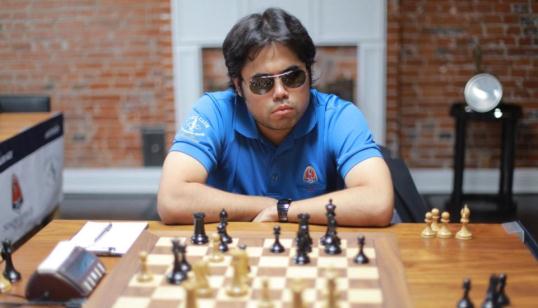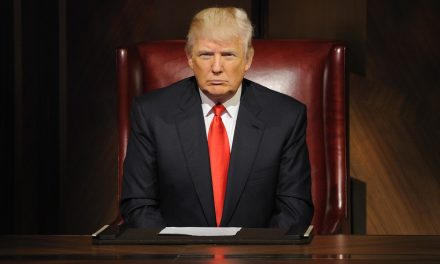As a teenager, and before I decided to get a bachelor’s degree in philosophy, I was intrigued by the character of Mr. Spock on the original Star Trek program. He had a human mother, but the appearance of his father, a humanoid from the planet Vulcan. He was raised on Vulcan where he experienced discrimination and taunting as a “half-breed,” and this led him to reject his human side almost entirely. Vulcans prized logic and disdained emotional reasoning, and Spock attempted to follow this example. Occasionally, his human side would emerge nonetheless, usually to his great shame.
The program explored the advantages and disadvantages of logical versus emotional reasoning through Spock’s internal conflict and also by contrasting him with the highly emotional (and fully human) Captain Kirk. I had reason to recollect my fondness for this theme in Star Trek while reading Sam Copeland’s article 10 Positions Chess Engines Just Don’t Understand.
My favorite example from Copeland’s piece involves a 3-minute blitz game between American grandmaster Hikaru Nakamura and a highly developed chess computer named Rybka. There are many notable things about this game, but for the layman the most spectacular is that Hikaru managed to make 224 (good) moves in under 180 seconds. I thought only computers could calculate that fast.
To understand the game at all, you need to know that chess is a lot like baseball in one respect. It’s a nearly perfect game with a numbingly wide array of possibilities, but it does contain a flaw or two that require special rules to address.
In baseball, this would be the infield fly rule which exists to eliminate the incentive to deliberately drop a pop-up in the infield when there are runners on first and second base and less than two outs. In that scenario, the base runners cannot run because they’ll be doubled off after the catch. Therefore, the infielder can let the ball drop and get two outs instead of just one by quickly throwing to third base to force out the runner on second, and the third baseman can then throw to second base to force out the runner on first. This is better than getting just one out by catching the batter’s pop-up. To avoid this, the infield fly rule says the batter is out and play is dead as soon as the ball goes up in the air.
In chess, there can be locked positions where meaningful movement is no longer possible and there is no way to force an end to the game. The players will usually agree to a draw when this happens, but that’s voluntary. There needs to be a rule that forces a conclusion, and that’s called the 50-rule move.
The fifty-move rule in chess states that a player can claim a draw if no capture has been made and no pawn has been moved in the last fifty moves (for this purpose a “move” consists of a player completing a turn followed by the opponent completing a turn). The purpose of this rule is to prevent a player with no chance of winning from obstinately continuing to play indefinitely or seeking to win by tiring the opponent.
You might guess from that definition that the rule is almost always invoked after pawns become locked and can no longer advance or capture. It’s also possible that a pawn could capture but it would be a terrible move that would turn a surefire draw into certain defeat. It’s this latter situation that Hikaru created to defeat the computer.
But here’s the fascinating part. Hikaru relied on the greed of the computer. He intentionally sacrificed pieces to give the computer a big material advantage. Thinking it was winning by a large margin, the computer wanted to avoid a draw at all costs, and therefore decided to make a bad move rather than allow Hikaru to invoke the 50-move rule and claim a draw.
Hikaru knew he couldn’t defeat the computer by outsmarting it with better positional play, but he could use the computer’s emotional reasoning against it. Understanding the goal, he prepared and executed a plan that would give the computer the choice between accepting a draw and going for the win, and he made sure going for the win would be the wrong decision.
The plan would not have worked if the computer were not mesmerized by its material advantage, so Hikaru had to add that to his design, too. That’s no easy trick, because he had to find a way to win despite having fewer powerful pieces on the board.
This is an inversion of the Star Trek model, where humans are constantly making stupid mistakes that could be avoided by rigorous logic. In this case, it’s the computer that abandons logic in its lust for a victory that will not be forthcoming. It’s like Hikaru found the computer’s suppressed human half. I can almost imagine the Rybka computer’s Spock-like embarrassed shame.
Maybe this is the best Star Trek analogy for this chess match, but the show also had examples where Kirk’s succeeded, where Spock would have failed, by using human intuition and psychology that defied logical reasoning.
Hikaru certainly identified a “psychological” weakness in the computer. Still, I believe this weakness was a human remnant. Much like Spock couldn’t fully shake off the influence of his human mother, Rykba couldn’t fully shake off the influence of its human programmers.
Here’s the game, which was played in 2008.







